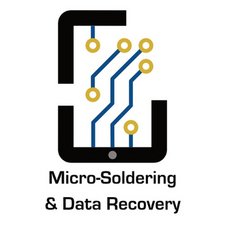Sorry for the long answer but I suppose an equally long and well formulated question deserves a full answer!
First of all, congratulations for moving over to the dark side ;>).
Micro-soldering looks easy when you watch the "masters" on Youtube but like any other skill, it requires lots of practice and experimentation. Before answering your question, let me point out that you will want to invest in reballing stencils & paste so that you can reball the chips that didn't position themselves properly and are probably functionally okay. You can always keep them separate from your "new" stock just to be careful.
Your original diagnosis was well founded and U2 is a likely culprit. While you struggled to get it properly positioned and you already realize that you had too much airflow, you may have blown off or partially dislodged a small passive component in the surrounding area. That could explain why it worked for a brief moment and then failed again. Of course, it is entirely possible that the problem is elsewhere and the heat you applied temporarily fixed the problem (kind of like a partially successful reflow). This is the biggest challenge with hot air on such a small circuit board. It doesn't take long for excess heat to move clear across the board and cause all kinds of secondary issues.
This brings me to a point I want to make about board repair. Don't take this personally as it is intended for a wider audience. IMHO, too many people just swap components because that's what others say you should do. Sometimes that's the only real option or when your out of ideas but I believe it's important to try and understand what is wrong before swapping components. Louis Rossmann famously says "use your brain" and he is absolutely right.
Let me ask you - why do you want to replace the PMIC? You do realize that the PMIC costs you ~$10. What if it doesn't solve the problem...what if you pull pads and now have to spend 30 minutes running jumpers. What happens if it is impossible to jumper a missing pad because it only travels between layers and goes directly to the CPU? Think of it this way...how would you feel if you complained about knee pain and the doctor immediately plopped you on the table and opened up your knee to change your ACL ligament, no questions asked? Oopsie...turns out that wasn't the problem :>).
You need to download the schematics and boardviews (or if you plan on doing this more seriously, get ZXW Tools). Look at the circuit from the battery connector out to the Tristar and PMIC. Start by plugging a USB ammeter to see if the phone is drawing any current. Start probing your main voltage rails (PP_BATT_VCC & PP_VCC_MAIN) to see if there are shorts or excess current draws (you will know this if the voltage is current limited and lower than usual). Check the voltages around Tristar.
If you suspect the PMIC...that should be because you checked the output voltages it creates and noticed that one or more of them are absent, shorted or incorrect. It could still be an upstream or downstream problem though:
- Downstream: For example, PP3V0_NAND could be reading 0V. Why? Is it because the PMIC is bad or because the NAND is drawing too much current. Maybe there is a bad decoupling capacitor that is pulling everything down.
- Upstream: One or several voltage rails on the PMIC may be bad. Is this because the PMIC is bad or because some other IC is pulling too much current (partial or full short) and it leaves less juice for the PMIC to create all of those voltages.
Probe and compare to a similar board to see if anything is out to lunch. At some point you may have to just swap the PMIC but at least it will be because that is your only or best option moving forward. Ask my good buddy @theimedic, he started the same journey a year ago so he will understand your pain.
So start probing my friend and come back to the forum to comment on your findings or ask follow-up/new questions. Tag me by my @ username and I will get back to you.
Bu yanıt yardımcı oldu mu?
Oy verildi
Geri al
Puan
7
İptal
Bu yoruma uygun yeri bulmak için bu konuyu kaydırın. Ardından, taşımak için "Bu yazıya yorum ekle"ye tıklayın.

 3
3  3
3 
 806
806
2 Yorum
Hello @refectio and @theimedic,
Thank you very much for your well formatted answer. I was able to get the phone to work but I lucked out and am the first to admit it.
I took the logic board back out for probably the tenth time cleaned all the connectors, got a new battery and put it back together. I plugged it in and to my amazement I got the charging symbol. I charged the phone and everything seems to be working fine.
So I suppose my U2 chip was successful although this whole experience has taught me how much I still have to learn. I already have stencils and paste ordered, purchased a usb ammeter and will begin the journey of learning board level repair.
Thanks again for your detailed answer!
Cort tarafından
Honestly I feel as though the stencils are a lot less a big deal
iMedic tarafından